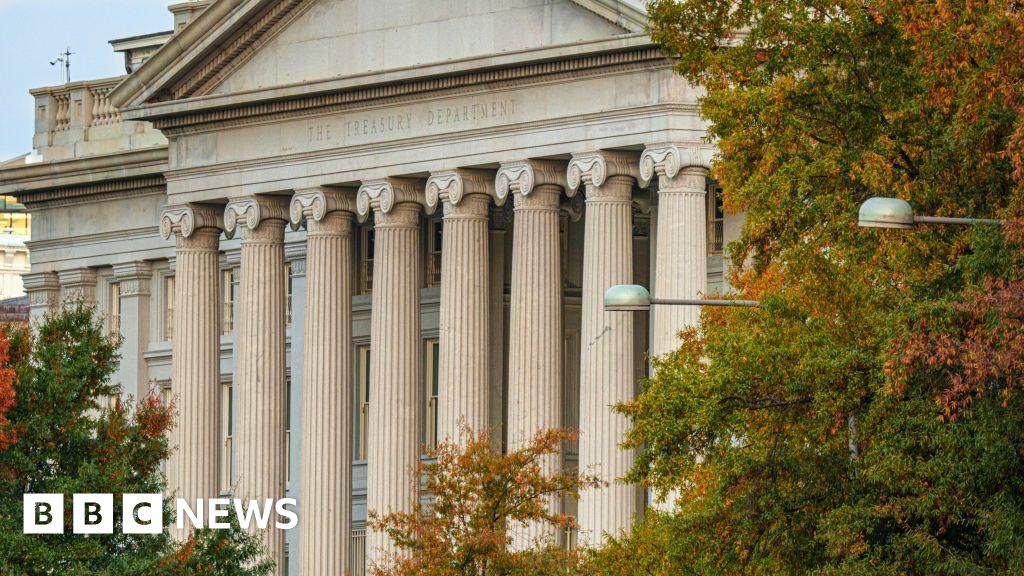It's the most abundant greenhouse gas and is warming Earth at an alarming rate.
Now, incredible new footage shows the churning masses of carbon dioxide (CO2) that are fueling climate change.
NASA's satellites have detected swirls of the gas, which is emitted by power plants, forest fires, livestock reared for their meat and much more.
Of course, CO2 is invisible, but experts at NASA's Scientific Visualization Studio have rendered it a bright orange to see it clearly.
In the clip, the gas appears in mesmerizing 'pulses' as the world spins and day turns into night.
NASA's video shows concentrations of carbon dioxide as the gas moved through Earth’s atmosphere from January through March 2020
'As policymakers and as scientists, we're trying to account for where carbon comes from and how that impacts the planet,' said climate scientist Lesley Ott at NASA's Goddard Space Flight Center in Greenbelt, Maryland.
'You see here how everything is interconnected by these different weather patterns.'
Satellites positioned in space have instruments called spectrometers that detect and monitor greenhouse gases like CO2.
NASA's global map shows concentrations of CO2 as the gas moved through Earth's atmosphere from January to March 2020, driven by wind patterns and atmospheric circulation.
As the video zooms in, you see the emissions rising from power plants, fires and cities, then spreading across continents and oceans.
The more intense emissions (with a higher intensity of CO2 molecules) appear as a deeper reddish-orange
Carbon dioxide (CO2) is a heat-trapping greenhouse gas and the primary reason for Earth’s rising temperatures. As CO2 builds in the atmosphere, it warms our planet
During the period, the majority of emissions from China, the US, and South Asia came from power plants, industrial facilities and vehicles.
Meanwhile, in Africa and South America, most CO2 emissions stemmed from fires, especially those related to land management, controlled agricultural burns and deforestation, along with the burning of fossil fuels oil and coal.
Trees absorb and store CO2 from the air, so they release the gas in great quantities when they're burnt.
In the video, CO2 appears in 'pulses', which is largely due to polluting human activity taking place mainly during the day.
For example, forest fires typically flare up during the day and dying down at night, while most vehicles (which emit CO2 from their exhausts) also take trips during the day.
As the world spins, the gas appears in mesmerizing 'pulses' as the day turns into night. Of course, CO2 is invisible, but experts at NASA's Scientific Visualization Studio have rendered it a bright orange to see it clearly
Of course, CO2 isn't the most potent greenhouse gas – that's methane (CH4), which comes from burning of fossil fuels, decomposition of landfill waste and more.
Scientists say methane has a global warming potential that's 28 times greater than CO2, although thankfully it's not released as abundantly as CO2.
However, scientists generally agree that Earth heading towards a climate disaster as humans fail to sufficiently curb emissions.
Eventually, the planet will become too warm due to the greenhouse effect, leading to widespread heat exhaustion and death, coastal cities flooding due to meted ice at the poles and food shortage, they think.
United Nations Secretary-General Antonio Guterres has said we are 'on a highway to climate hell with our foot on the accelerator'.
What is the greenhouse effect?
The greenhouse effect is the reason our planet is getting too hot to live on.
CO2 released by human activity is accumulating as an 'insulating blanket' around the Earth, trapping more of the sun's heat in our atmosphere.
Without the natural greenhouse effect, heat would pass outwards from the Earth’s surface into space - making it too cold to live. But emissions of gases such as CO2 and methane push the greenhouse effect too far - acting as a blanket that traps heat
CO2 - and other greenhouse gases - are emitted by actions such as burning fossil fuels like coal for energy, burning forests to make way for livestock and
Fertilisers containing nitrogen produce nitrous oxide emissions - another greenhouse gas.
Meanwhile, fluorinated gases are emitted from equipment and products that use these gases.
Such emissions have a very strong warming effect, up to 23,000 times greater than CO2.
Sources: European Commission/BGS/NASA
 (1).png)
 5 months ago
30
5 months ago
30













